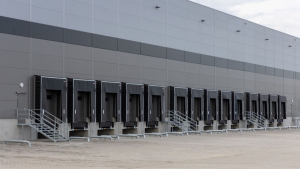
The total warehouse and industrial stock in Poland has surpassed the 13 million sqm mark. In the period from January to September 2017, new supply totalled more than 1.6 million sqm and occupier activity remained healthy. A new report by Cresa describes the current situation as a golden age for the Polish industrial market.
“Both occupier and developer activity has been setting new highs in recent years, fuelled by the country’s robust economy, transport infrastructure improvements and buoyant investment market. The market is offering ever more modern schemes and the growing importance of robotisation is already a fact,” says Tom Listowski, Partner, Head of Industrial & Warehouse Department for Central and Eastern Europe at Cresa.
According to “Occupier Insight: Industrial and Warehouse Market in Poland, Q3 2017”, prepared by Cresa, from January to September 2017 the largest volume of new space was delivered in Warsaw (371,100 sqm). In Szczecin, two large-scale schemes were completed: Panattoni BTS Amazon Szczecin (161,000 sqm) and Goodman BTS Zalando Szczecin (130,000 sqm), while the region’s total supply amounted to nearly 316,000 sqm. Poznań is the third largest market in terms of warehouse supply this year with almost 221,000 sqm added to this region’s industrial stock since January 2017.
Warehouse take-up totalled 2.7 million sqm in Q1-Q3 2017. The largest transaction was Panattoni’s deal to develop a 135,000 sqm BTS scheme for Amazon in Sosnowiec, pushing Upper Silesia’s leasing volume up to 578,200 sqm, one of the highest in Poland. The strongest leasing activity was in Central Poland, where 619,500 sqm was transacted (up by 71% on 2016’s total), followed by Warsaw with 614,500 sqm transacted. In the same period, Tricity’s leasing volume exceeded 139,000 sqm, which is 22,000 sqm more than last year’s level. According to Cresa’s experts, the recently completed DCT port is likely to attract warehouse occupiers to this region.
Despite the high level of supply, Szczecin recorded the lowest vacancy rate at 0.7%, which equates to barely 3,500 sqm of available space. This region benefits from its proximity to the German border and low base rents, leading to further developments in the area. Central Poland’s vacancy rate fell to a record low of 1.4% (23,100 sqm), down by 1.5 p.p. compared with where it was at the end of 2016. Healthy demand coupled with moderate supply pushed the region’s vacancy rate down from the high level of 12.9% recorded in 2013. The largest volume of vacant space is in Warsaw (nearly 258,000 sqm), but the vacancy rate there is falling despite high supply levels thanks to robust occupier demand.
“The Polish warehouse and industrial market will maintain its strong upward momentum next year. The positive outlook for manufacturing output or PMI readings show that there is space for further projects, while the planned changes to special economic zone regulations and an opportunity to apply for state aid for projects in any part of Poland are likely to drive the market going forward,” says Bolesław Kołodziejczyk, PhD, Head of Research & Advisory at Cresa Poland.



